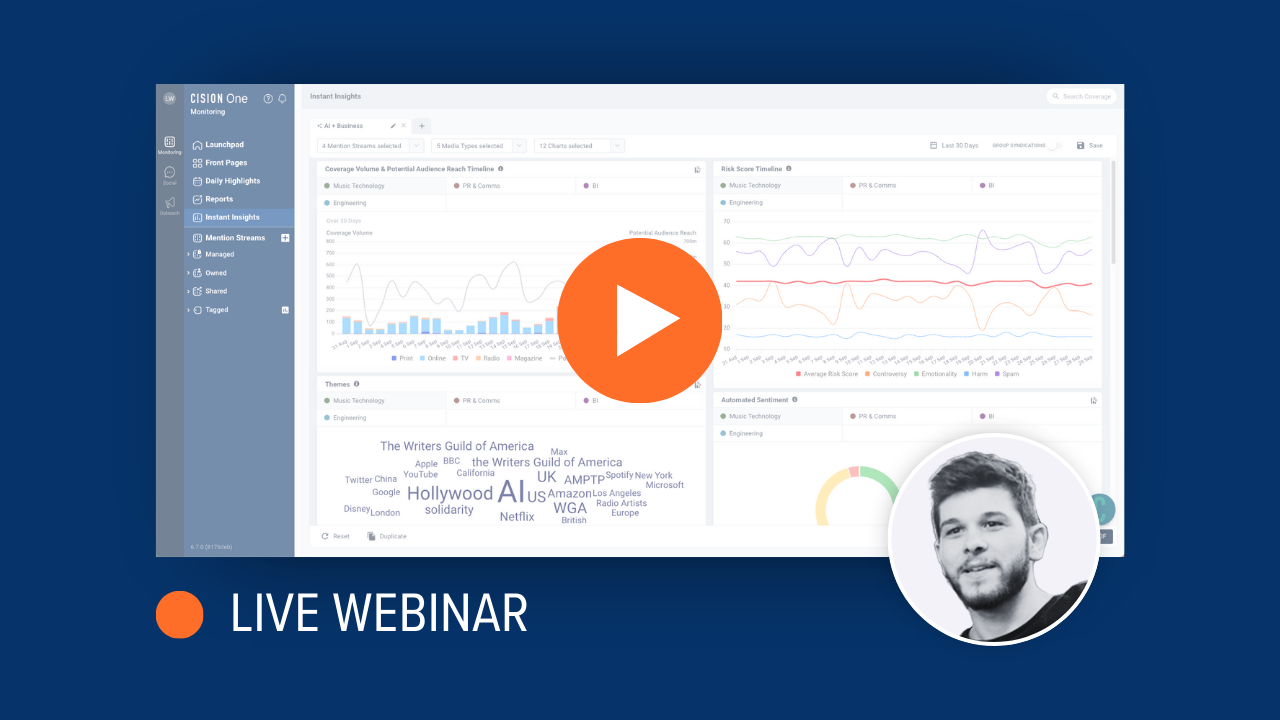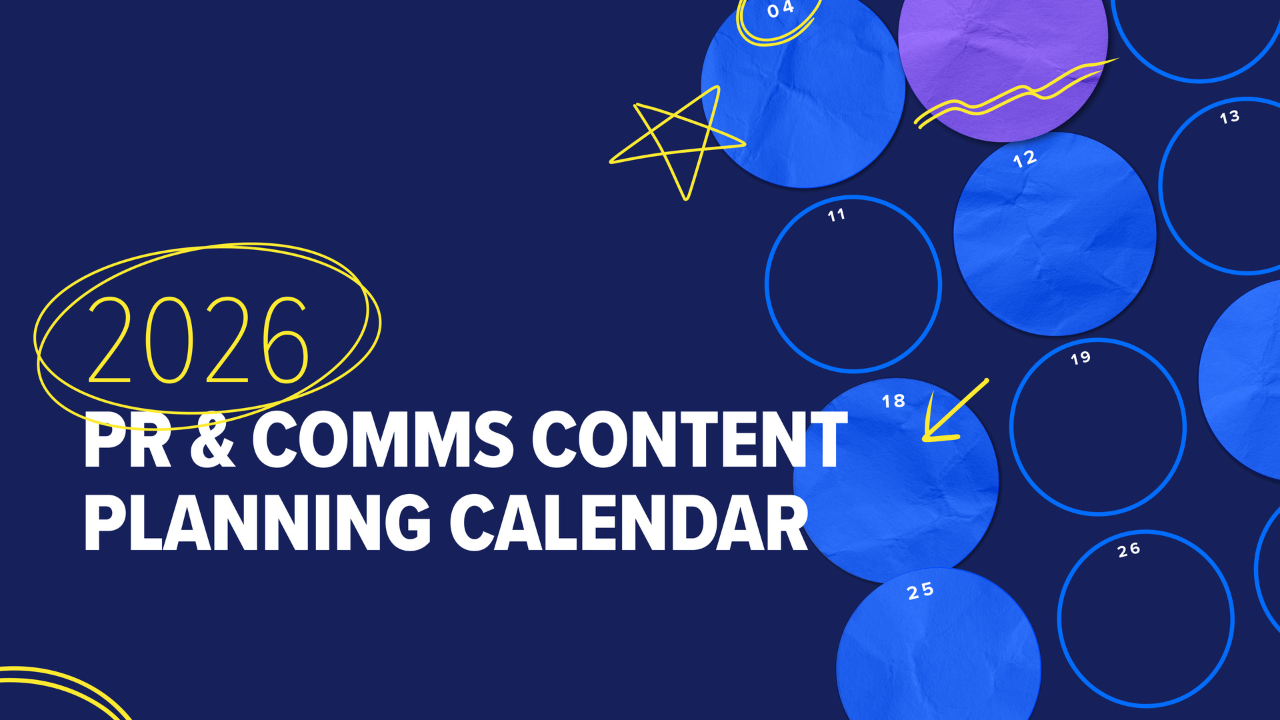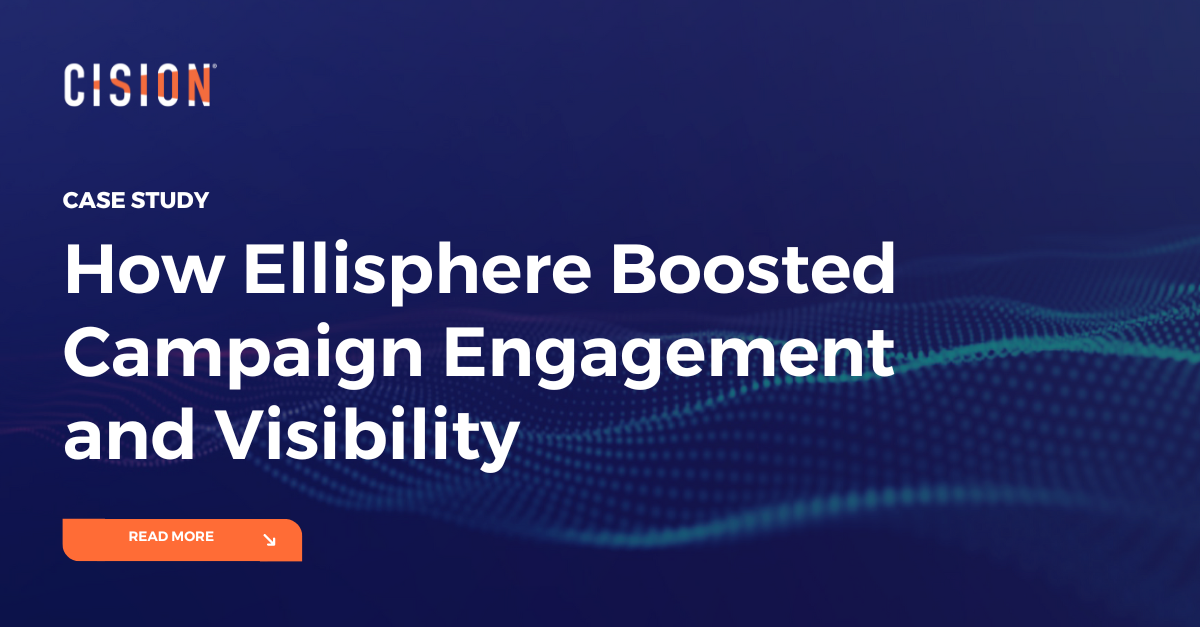There are more uses for AI in public relations than you probably realize. The technology has been utilized in the industry for over a decade, working away in the background to process large amounts of data and drive popular PR tools like sentiment analysis.
But today’s AI in PR goes way beyond those behind-the-scenes functions, with applications ranging from traditional chatbots to cutting-edge, comprehensive monitoring platforms. According to the 2025 Comms Report, three in four comms professionals feel confident in their organization’s ability to take advantage of AI, while 37% use generative AI to review or optimize content. These findings indicate that while the industry is already discovering more benefits and use cases for AI, there is opportunity to increase adoption further.
Read on to learn more about AI tools for public relations, and how brands can make the most of this powerful, fast-moving technology.
What is AI in Public Relations?
In public relations, artificial intelligence has already had many roles and is increasingly important. Because so much of PR relies on being digitally connected, AI’s ability to analyze vast amounts of information in seconds makes it a perfect fit. Data analysis that would take a team of humans days to complete can be done by AI in seconds, and provide insights that are more accurate and relevant.
But that’s only the start. The emergence of generative AI, through tools like ChatGPT and Gemini, has completely changed how the PR world works with the technology. Now, AI is drafting press releases and pitches, managing social media schedules, responding to customer comments, emails, and messages. As its capabilities grow, it’s becoming more essential to understand how to use AI for public relations.
How Is AI Used in Public Relations?
AI is a fast-paced and ever-changing technology. To really understand how these tools are used, let’s look at some specific examples of AI in PR.
AI Content Creation
Generative AI tools like OpenAI’s ChatGPT create new content based on a human-provided text prompt. This can create press releases, social media posts, headlines, interview questions, and outlines, and quickly customize them for different target audiences.
With text-to-video and other multimedia capabilities, AI can also make quick, high-quality images, audio, and videos for social media, blog articles, and more. However, generative AI does have limitations, bringing in factual errors and “hallucinations” to its output. This means it’s critical to ensure you have human oversight on any AI-assisted workflows to ensure accuracy on any internal and external comms.
Social Media Automation
Managing multiple social media platforms can be time-consuming. AI can simplify these processes and save time by automating tasks like creating content calendars, posting content, and adjusting captions. It can also help you improve collaboration with your team and schedule and deliver messages at the right time, to the right audience.
AI Chatbots
Chatbots are interactive AI that emulate a human by answering questions, and they’ve grown beyond handling basic customer complaints. Businesses today use them to answer frequently asked questions and make personalized product recommendations, as well as internally to respond to messages and automate tasks. Chatbots can improve customer satisfaction and increase efficiency, making them an essential link between public relations and AI.
AI Speech-to-Text Tools
Many different industries and professions use speech-to-text tools, which have been around in some form for several years. The most common use is to take notes in meetings, but today’s tools are going beyond these basics. Microsoft Teams and Zoom, for example, are integrating AI to make communication during and after meetings more efficient.
With this type of AI tool, public relations professionals can automatically transcribe press conferences, media interviews, and conference presentations, as well as write speeches. Otter is an example of a popular AI service for transcribing voice notes.
Translation and Localization
AI is built on large language models (LLMs), vast datasets of text trained to understand human language. This is ideal for PR teams who work on global campaigns across different languages and cultures.
AI translation has already become embedded in platforms PR pros use day to day. For example, LinkedIn’s translate feature allows you to translate foreign-language posts in your native language. Plus, tools like DeepL allow for text translation, from short statements to large PDF, Word, or PowerPoint documents.
Summarization
AI can help PR professionals quickly digest and summarize large volumes of information. Think condensing lengthy reports, media coverage, research papers, and meeting audio into key bullet points and actionable insights.
For example, you might have a 50-page industry report you need to condense into a one-page executive brief. ChatGPT, Gemini or specialized platforms like SummarizeBot can do this with assets including PDFs, articles, and video transcripts.
RAG (Retrieval-Augmented Generation)
RAG combines AI model capabilities with access to specific databases or documents, making it valuable for PR teams managing large amounts of organizational data. Unlike standard AI that relies on general training data, RAG can pull from your company's press releases, brand guidelines, previous campaigns, and internal documents to generate responses that are more relevant to your organization's needs.
For PR professionals, this means you can use AI to more accurately answer questions or generate content that's aligned with brand voice and historical messaging. For example, RAG systems can instantly access past crisis communications, product launch materials, or executive statements to ensure consistency across all communications while reducing the risk of off-brand messaging.
Media Monitoring
Whether it’s online news, TV, radio, podcasts, or print, there’s a vast amount of media content out there for public relations to sort through – AI can help cut through all this noise in seconds. Cutting-edge AI algorithms can not only provide accurate, real-time media analytics, but also surface the stories connected to your brand mention searches. Here, it’s important to remember that AI is only as strong as the data it’s built on, so the more comprehensive the data is you’re importing, the better results you’ll get.
Sentiment Analysis
Sentiment analysis goes even further than simply capturing brand mentions through media monitoring or social listening, providing you with a picture of how people actually feel about your brand.
As well as classifying text as positive, negative, or neutral, the best AI tools for public relations use AI to contextualize words, accounting for nuances and multiple opinions in a single post. For example, CisionOne’s React Score can detect harmful content like fake news or hate speech as it surfaces.
Media Outreach
AI for public relations can streamline and automate media outreach and relationship management by helping you identify and connect with the right people. It’s also being used to generate copy for media pitches, taking a PR pro from blank page to outreach email draft in seconds.
However, media outreach is an area that requires careful consideration when it comes to AI. Most journalists say they are open to the idea of PR pros using AI in outreach, with only 27% indicating they are “strongly opposed.” Their biggest concern with PR professionals using AI is that the content will contain factual errors, cited by 72% of respondents in the 2025 State of the Media Report.
What Are the Benefits of AI in Public Relations?
Though AI presents many challenges around implementation, ethics, and regulation, it’s undoubtedly changing the way PR pros work, and will continue to in ways we may not even have predicted. What are the benefits of AI in PR? Let’s look at some of the ways it can help level up your comms strategy.
Organizational Efficiency
Thanks to AI, public relations pros can automate time-consuming manual tasks. For example, instead of spending hours manually tracking brand mentions across hundreds of news sites and social platforms, AI-powered monitoring tools can instantly alert you to relevant coverage, categorize sentiment, and compile comprehensive reports.
This is just one instance of AI taking care of manual, day-to-day work accurately and consistently, freeing up your team to focus on the big picture: campaign strategy and optimization.
Customer Engagement
AI can provide real-time insights into what’s working in your campaigns – and what isn’t. It can even give you accurate predictions about which messages may resonate the most. This helps you tailor your content and deliver the right material to the right people at the right time. When your campaign resonates with your audience, they’ll engage and convert.
Reputation Management
One of the biggest benefits of AI in public relations is the ability to proactively manage your brand reputation. AI tools can monitor and analyze brand sentiment, identifying both positive and negative patterns. This insight enables you to take action to magnify the good and manage the bad, safeguarding your reputation and creating happier customers.
Crisis Communications
AI and public relations go hand-in-hand when it comes to crisis communications. AI-driven monitoring and social listening tools can help you anticipate how and when negative coverage may turn into a crisis, so you can create strategies to mitigate those risks. And if a crisis does happen, you’ll be able to respond quickly and put out any fires.
Personalization at Scale
AI can help PR pros speed up outreach, streamlining the process of customizing pitch emails, press releases, and social media content for different segments, regions, or individual journalists and influencers. With these capabilities, your efforts to build media relationships can be scaled up without sacrificing the personal touch. Plus, the reporters you work with should each receive relevant content that feels specifically tailored to their interests, audiences, and beat coverage.
Improving ROI
Ultimately, all these benefits of AI in PR ladder up to one thing: improving the ROI of your campaigns and growing the bottom line. Not only that, they enable you to connect your PR activities to KPIs like click-through rate, conversions, and revenue, proving your team’s positive impact on the business.
The Future of AI in Public Relations
AI has already had a big impact on the public relations world, and that's undoubtedly going to continue due as the technology advances. From autonomous AI agents to sophisticated prediction systems, the next wave of innovation promises to reshape how PR professionals work, communicate, and drive results for their organizations.
Agentic AI
Agentic AI is an AI system that can operate with autonomy, aiming to achieve specific goals with minimal human intervention. Where generative AI requires human prompts to help draft copy for a press release, agentic AI has the potential to execute an entire campaign.
An AI agent could also be put to work to build comprehensive media lists – think automatically researching journalists' recent articles and social media posts, identifying areas of coverage, then compiling them into lists by coverage sector. Agentic AI’s ability to automate time-consuming work in the PR workflow should empower teams to spend more time focusing on strategy, relationship building, and campaign development.
AI Avatars
Think of AI avatars as digital spokespeople for your brand. They can be programmed with deep knowledge of company messaging, brand values, and industry expertise, allowing them to undertake tasks like conducting interviews or addressing employees on video calls. For recent examples, see both Klarna and Zoom creating AI avatars of their CEOs to deliver earnings calls.
AI avatars can also provide an additional layer of accessibility and consistency for global communications, with AI being able to translate audio messaging into different languages.
Real-Time Crisis Prediction
Advanced AI systems are moving beyond monitoring existing crises to predicting potential reputational threats before they materialize. By analyzing patterns in social media sentiment, news cycles, and industry trends, these predictive systems can alert PR teams to potential issues far in advance.
These capabilities will allow organizations to shift from a reactive to proactive outlook, allowing them to develop preventative measures earlier and halt a crisis in its tracks.
Content Verification
With misinformation and misleading AI-generated content an increasing concern, verification tools will become a necessity for maintaining credibility in public relations. These AI-powered systems will be able to aid in everything from fact-checking content to detecting deepfakes that could be harmful to your brand.
For PR pros, this means greater accuracy in communications and the ability to quickly identify and address false information about their brands, helping to maintain trust with media and audiences.
Ethical AI Governance
As AI becomes more integrated into how organizations operate, there'll be a greater need to navigate questions of authenticity, disclosure, and responsible usage while ensuring any AI-assisted work maintains a human touch.
While there's currently no comprehensive government or global regulation for AI, this shouldn't prevent brands from developing their own AI frameworks and ethical guidelines. With PR at the heart of how an organization communicates both internally and externally, PR teams are uniquely positioned to help tell the story of their brand’s approach to AI governance – and work to establish best practices for transparency, authenticity, and responsible AI deployment across their own industry.
More AI in Public Relations Resources
For more information on AI and how the technology is reshaping the public relations world, consider these related resources:
- The Complete AI Public Relations Guide
- 16 Effective AI Prompts for PR Pros
- AI in Journalism: What Reporters Really Think
- AI Experts Answer Your Burning AI in PR Questions
- Best Practices for Using AI in PR
To learn more about how CisionOne can help you harness the benefits of AI in PR, get in touch to speak with an expert today.
Most Recent Posts
Cision Resources
-
E-books and Guides
Comprehensive how-to guides on strategy and tactics
-
Case Studies
What are other brands doing – and how can we learn from them?
About Simon Reynolds
Simon is the Senior Content Marketing Manager at Cision. He worked as a journalist for more than a decade, writing on staff and freelance for Hearst, Dennis, Future and Autovia titles before joining Cision in 2022.
Learn More. Do More. demo new
PR Tips, Case Studies, and Product Updates

[On-Demand Webinar] The Next Generation of Media Intelligence: From Gorkana to CisionOne
Explore CisionOne, a revolutionary media intelligence platform, and the evolution of Gorkana. Learn key features and strategies from Luke Williams, CisionOne Product Marketing Manager. Elevate your media outreach to new heights!


